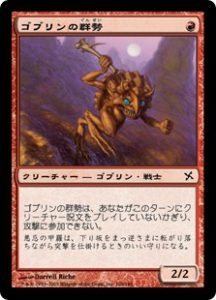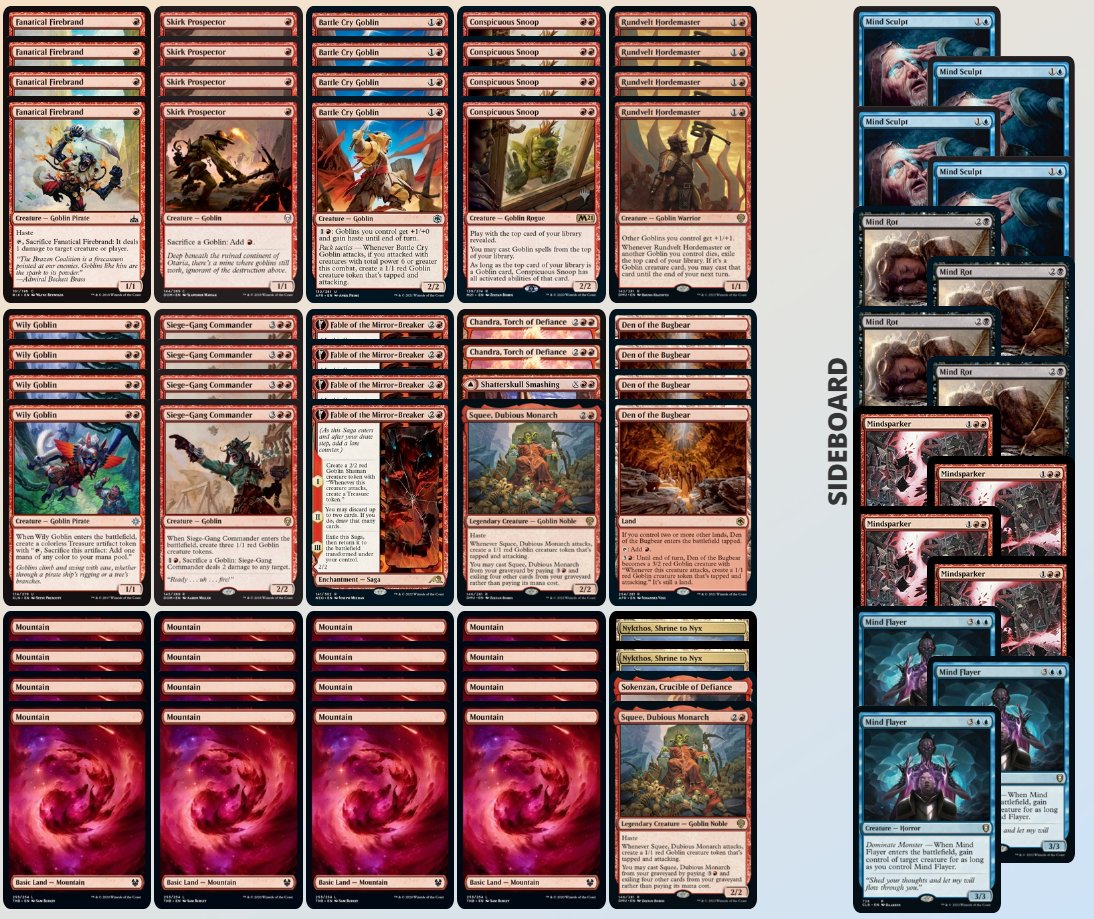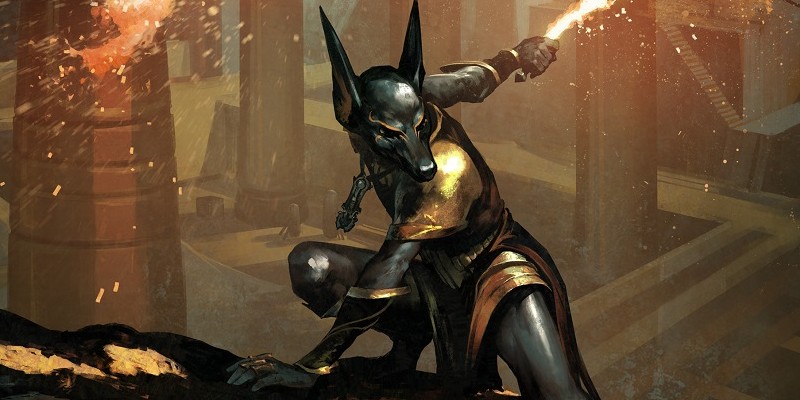

These decks usually combine the mana acceleration and fat creatures of Green with the burn spells of Red. This is an archetype that, like White Weenie, has been around since the birth of the game and is still being played today. Many color combinations in Magic happen to work well together consistently, and the most aggressive of those combinations is Red/Green. These decks have more control elements than traditional Sligh, and it is debatable whether or not they deserve the title. More modern versions of Sligh have been called " Red Deck Wins". Cards like Mogg Fanatic, Jackal Pup, and Cursed Scroll were combined with Mirage block cards Fireblast, Hammer of Bogardan, Tin Street Dodger and Viashino Sandstalker to make Sligh one of the most successful tournament decks of the era.

The most powerful incarnation of Sligh came soon after, with the release of the Tempest set. The original deck, entitled "Geeba," was built by Jay Schneider and popularized by Paul Sligh. The first Sligh deck appeared during the Ice Age block in 1996. Like White Weenie, Sligh has gone through multiple incarnations, all of which have combined small creatures with burn and the Mana Curve. It introduced the Magic world to the Mana curve principle whereby the deck intended to maximize its' resources every turn. Sligh was the first example of a "Modern Aggro Deck". The Shadow mechanic and the card Cataclysm helped the deck compete against the myriad of other aggro and Control decks. Another powerful White Weenie incarnation includes when the Tempest block was legal in Standard. White Weenie was at its most powerful during the Masques block, when the Rebel mechanic allowed the deck to dominate. It has been played since Magic began, with White Knights and Armageddons, and is still played today, with Suntail Hawks and Umezawa's Jittes, or with Exalted Angels and Mother of Runes in the Legacy variant, Angel Stompy. The deck uses small White creatures (usually costing one or two mana) and often some sort of blocker removal or board sweeper. Some aggro decks are linked merely by their color, but they remain similar enough in style that one may refer to all incarnations of the archetype by a single name effectively. Today, nearly every tournament metagame includes one or two aggressive decks. As new sets were released, the relative power of the aggro deck increased. Aggro decks were generally unable to deal with the far more powerful Control decks. Planeswalkers have become an important card type in aggro sideboards as a slower but more powerful top end that is hard to interact with.Įarly aggro decks were rather slow and usually included both small and large creatures. Blue is least likely to have an aggro deck, but when it does, it is characterized by countermagic disruption and evasion.

Black does not always have an aggro deck, but it benefits from a wider sideboard, with good removal, hand disruption, and card advantage options. White aggro tends to have stronger one and two drops, green aggro is heavier on threes and fours, and red aggro tends to run more spells from the value of burn.

The balance between consistent mana, anti-flooding measures, and powerful top end is critical to creating a good aggro deck.Įven within aggro decks, there are subsets within them, as seen below. Monocolor aggro is usually around in some form simply due to the possibility of running 20 or fewer lands with no real mana issues. Manabases are important without untapped dual lands, a typical aggro deck will falter to itself far too often to punish the falters of other decks, given that lands are usually cut under 24 to improve spell density. Mulligan knowledge is hence extremely important, given the desire to close the game under six turns. Rarely are there any card advantage options in the main deck, and four is the standard top of the curve, in order to maximize on land-light draws. The typical aggro deck varies, as seen below, but it usually runs under 24 lands and 26-32 creatures (or creature equivalents), with some flex slots for supporting disruption. An aggro deck has much more redundancy, and usually will always have more redundancy than any other deck in the format - somewhere in the sets of the format is a selection of creatures that can attack well, whereas some formats have too narrow or too expensive removal suites, which inform the nature of control and midrange decks. The deck attempts to use board presence to dictate terms, and its biggest advantage to other archetypes is consistency. 4.9 Affinity/Raffinity/Ravager AffinityĪggro decks use the straightforward and classic ways to win at Magic: play creatures, and attack with them.


 0 kommentar(er)
0 kommentar(er)
